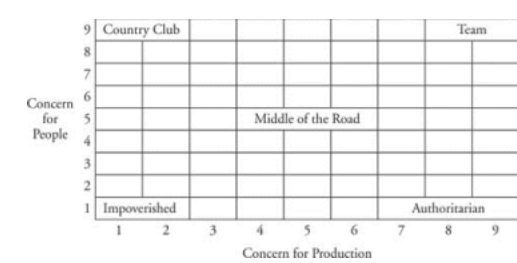
Clayton Alderfer extended Maslow’s and Herzberg’s work. He identified three groups of needs, namely: Existence, Relatedness, and Growth, hence the ERG theory. Existence needs are concerned with survival or physiological well-being. These needs are satisfied with food, water, air, shelter, working conditions, pay, and fringe benefits. Relatedness needs are concerned with interpersonal and social relationships. These needs are satisfied with relationships with family, friends, supervisors, subordinates, and co-workers. Growth needs
are the desires to be creative, to make useful and productive contributions and to have opportunities for personal development.
These needs are related to Maslow’s and Herzberg’s, but ERG needs do not have lines of separation. Alderfer suggests a continuum of needs unlike Maslow and Herzberg who talked of hierarchical level and two factors of needs respectively. According to him, the lower level needs do not have to be satisfied before higher level needs become motivating. He does not agree that deprivation is the only way to activate a need. For example, under this theory, a person’s background (e.g. cultural environment) may indicate that the relatedness needs will override unfulfilled existence needs and that the more the growth needs are satisfied, the more they will increase in intensity.
Titany answered the question on September 20, 2021 at 12:40
- Limitations of the Hierarchy of Needs Model (Solved)
Limitations of the Hierarchy of Needs Model
Date posted: September 20, 2021. Answers (1)
- List three characteristics of learning organizations(Solved)
List three characteristics of learning organizations
Date posted: September 20, 2021. Answers (1)
- Describe three situational leadership theories(Solved)
Describe three situational leadership theories
Date posted: September 20, 2021. Answers (1)
- Forms of power used by managers to change employee behaviour (Solved)
Forms of power used by managers to change employee behaviour
Date posted: September 20, 2021. Answers (1)
- Identify the leadership styles found in the managerial grid model below
(Solved)
Identify the leadership styles found in the managerial grid model below

Date posted: September 20, 2021. Answers (1)
- Abilities that successful leaders possess according to Peter Drucker(Solved)
Abilities that successful leaders possess according to Peter Drucker
Date posted: September 20, 2021. Answers (1)
- Identify six core characteristics that the majority of effective leaders possess(Solved)
Identify six core characteristics that the majority of effective leaders possess
Date posted: September 20, 2021. Answers (1)
- Describe the importance of leadership in an organisation(Solved)
Describe the importance of leadership in an organisation
Date posted: September 20, 2021. Answers (1)
- Define directing in relation to leadership(Solved)
Define directing in relation to leadership
Date posted: September 20, 2021. Answers (1)
- Describe the employee compensation(Solved)
Describe the employee compensation
Date posted: September 20, 2021. Answers (1)
- Limitations of performance appraisal (Solved)
Limitations of performance appraisal
Date posted: September 20, 2021. Answers (1)
- List three components of performance appraisal(Solved)
List three components of performance appraisal
Date posted: September 20, 2021. Answers (1)
- Purpose of evaluating the employees(Solved)
Purpose of evaluating the employees
Date posted: September 20, 2021. Answers (1)
- Types of training in an organization(Solved)
Types of training in an organization
Date posted: September 20, 2021. Answers (1)
- Describe the ways that employers use to identify a suitable individual for a vacant post(Solved)
Describe the ways that employers use to identify a suitable individual for a vacant post
Date posted: September 20, 2021. Answers (1)
- List three external recruiting strategies in an organization(Solved)
List three external recruiting strategies in an organization
Date posted: September 20, 2021. Answers (1)
- Outline three Forms of authority in an organization(Solved)
Outline three Forms of authority in an organization
Date posted: September 20, 2021. Answers (1)
- Describe three organizational designs(Solved)
Describe three organizational designs
Date posted: September 20, 2021. Answers (1)
- Discuss three traditional methods for grouping work activities(Solved)
Discuss three traditional methods for grouping work activities
Date posted: September 20, 2021. Answers (1)
- List five weaknesses that can be captured in an organization chart(Solved)
List five weaknesses that can be captured in an organization chart
Date posted: September 20, 2021. Answers (1)